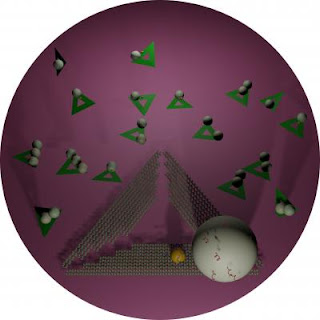The self-assembling properties of the DNA molecule have allowed for the construction of an intriguing range of nanoscale forms. Such nanoarchitectures may eventually find their way into a new generation of microelectronics, semiconductors, biological and chemical sensing devices and a host of biomedical applications. Now Hao Yan and Yan Liu, professors at the Biodesign Institute's Center for Single Molecule Biophysics and their collaborators have introduced a new method to deterministically and precisely position silver nanoparticles onto self-assembling DNA scaffolds.
In their latest research, the group used a long single-strand of DNA, which had been folded into a triangular building platform through a process known as DNA origami. This architectural foundation was then 'decorated' with one, two or three silver nanoparticles, which self-assembled at pre-determined locations on the DNA nanostructure.
The group however, had to overcome significant obstacles to the use of silver nanoparticles. Silver tends to be much less stable than gold and can easily oxidize in its normal state. To counter this tendency, Yan and Liu's team attached multiple sulfur atoms to the backbone of the DNA strand used to make the platform for the nanoparticles. Each silver nanoparticle is then firmly held in place by nine sulfur atoms, once it is mounted on the DNA origami shape.
The new study paves the way for creating a more functional DNA architecture. "I believe this work will open doors to implement and study distance-dependent plasmonic interaction between noble nanoparticles at the single particle level," Yan said, adding that the first critical steps to creating hierarchically organized silver nanoparticle structures have now been taken. ###
Written by Richard Harth Biodesign Institute Science Writer richard.harth@asu.edu
Contact: Joe Caspermeyer joseph.caspermeyer@asu.edu 480-727-0369 Arizona State University















No comments:
Post a Comment